New Bedford, Massachusetts, has a fascinating link to the whaling lore, notably through the iconic novel “Moby Dick.” One must-visit spot to delve into this maritime history is the Whaling Museum, a real gem for history buffs.
But there’s another hidden treasure in town: the Seamen’s Bethel.
This place offers a unique glimpse into the past. Below, I’ll give you the lowdown on what makes it special and throw in some handy tips for your visit.
Table of Contents
What is the Seamen’s Bethel?
The Seamen’s Bethel is a historic and iconic maritime church located in New Bedford, Massachusetts.
Still active today, it once served as a center for worship and support for sailors in the 19th century, providing a place for them to pray, seek solace, and find community before embarking on often perilous whaling expeditions. It’s also famous for its association with Herman Melville’s novel “Moby-Dick.”
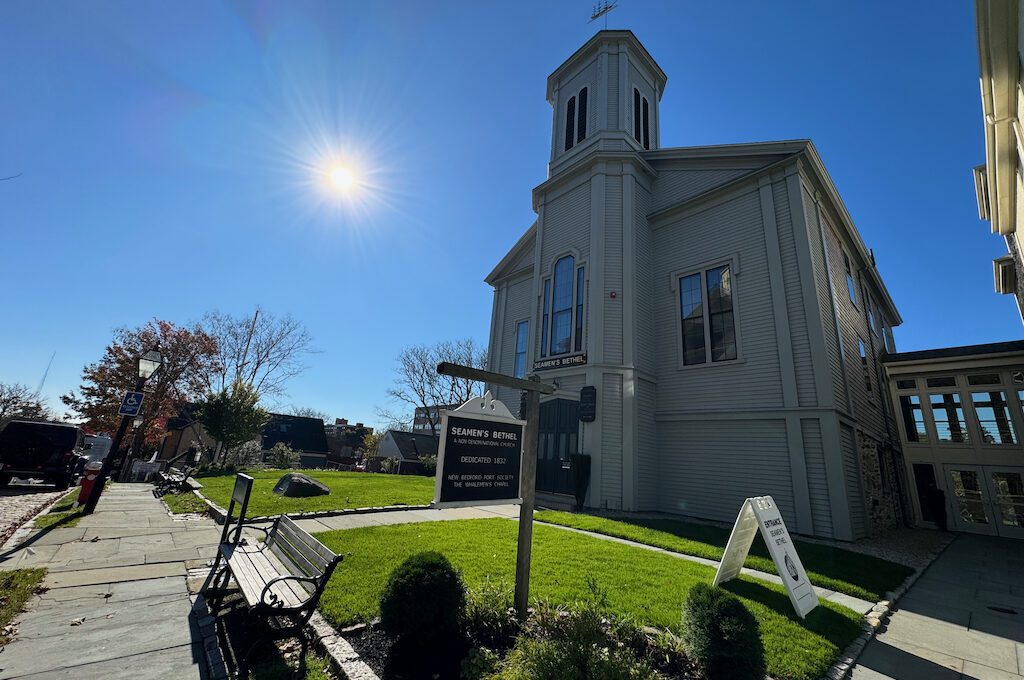
Seamen’s Bethel history
Back in the 1820s, New Bedford was on the rise as the new whaling capital, following in the footsteps of Nantucket. This led to a significant influx of sailors into the town, and along with them came some of the sailors’ habits.
These whale men were in search of gambling dens, brothels, saloons, and dance halls – establishments that the town’s more upstanding citizens viewed as detrimental to the community’s decorum and order.
Moreover, according to the NPS, Quaker whaling merchants were worried that these sailors tended to squander the wages they’d earned from multi-year voyages in just a few days on such indulgences, leaving them financially destitute.
Recognizing the need to provide these men with something to anchor them to a more stable lifestyle, the New Bedford Port Society for the Moral Improvement of Seamen was established.
The society began offering church services to the whale men before they set out to sea. Initially, these services were held at the Town Hall or by the waterfront, but these locations proved less than ideal.
So in 1832, they dedicated the Seamen’s Bethel as a nondenominational church, and it continues to serve in that capacity today.
Among the men who attended one of these services before embarking on a seafaring journey was none other than Herman Melville, the renowned author of “Moby Dick.” In fact, the pew he occupied during these services in December of 1840 is still marked to this day.
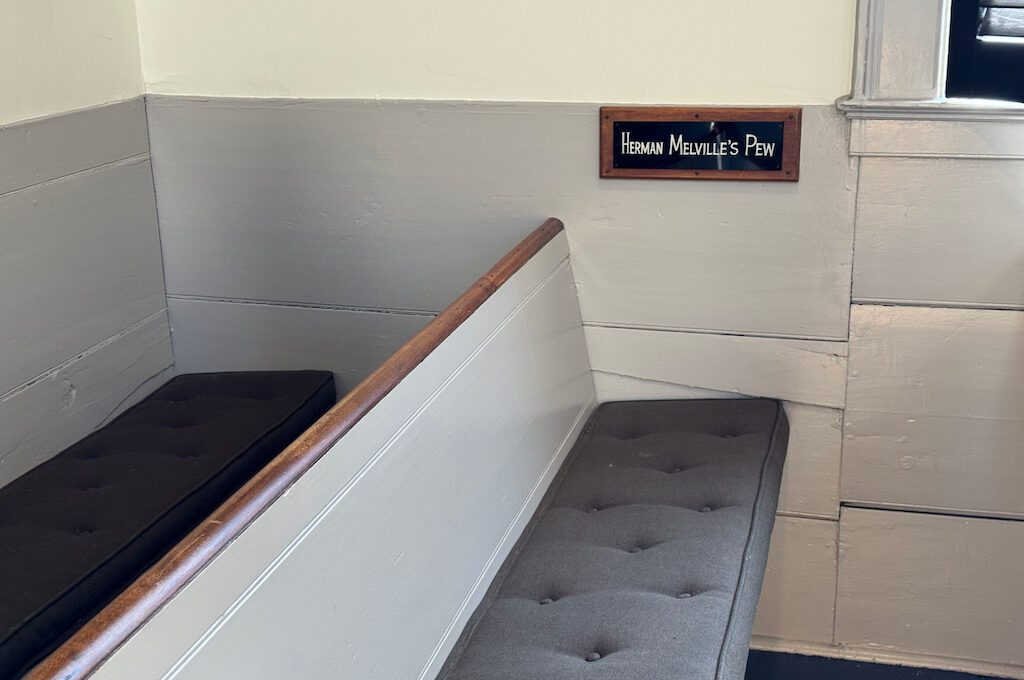
The Seamen’s Bethel even earned a mention in Melville’s novel itself, adding a touch of literary allure to its storied history:
In this same New Bedford there stands a Whaleman’s Chapel, and few are the moody fishermen, shortly bound for the Indian Ocean or Pacific, who fail to make a Sunday visit to the spot.
In Melville’s novel, a powerful sermon is delivered from a pulpit shaped like the bow of a ship.
Nor was the pulpit itself without a trace of the same sea-taste that had achieved the ladder and the picture. Its panelled front was in the likeness of a ship’s bluff bows, and the Holy Bible rested on the projecting piece of scroll work, fashioned after a ship’s fiddle-headed beak.
While it’s likely that Melville saw a more typical English-style pulpit during his visit, the vivid image of this maritime-inspired pulpit from his imagination eventually found its way into the 1950s film adaptation of “Moby Dick.”
This cinematic portrayal piqued the interest of visitors to New Bedford, who arrived in search of this distinctive nautical pulpit, only to find that it didn’t exist in reality. (Although they used the exterior of the building for the movie the interior shots of the pulpit were not done on location.)
To gauge public interest, the Seamen’s Bethel took a creative approach by constructing a temporary bow-shaped pulpit, and it turned out that people loved it.
Although the initial plan was to create a more permanent and official version later on, they decided to stick with the original one, which is still on display today.
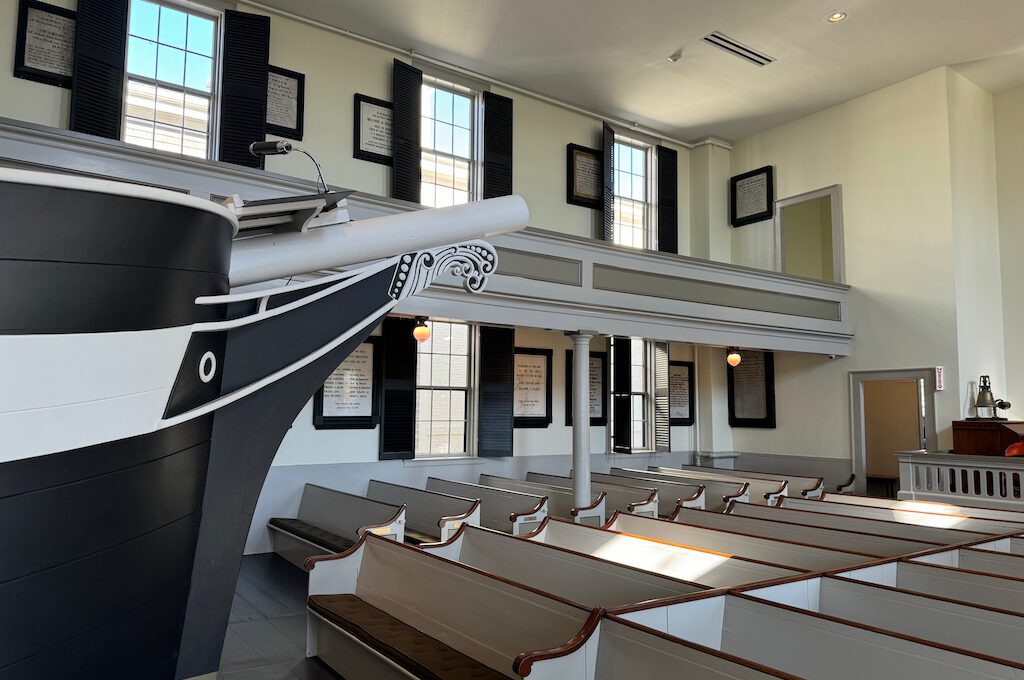
How to visit the Seamen’s Bethel
According to the National Park Service, the Seamen’s Bethel typically follows the seasonal schedule common to many places in this region, operating from Memorial Day to Columbus Day. However, during our visit in November, we were fortunate to find it open and accessible.
The good news is that there’s no admission fee to visit, but it’s always appreciated if you can make a donation while you’re there to support this historical gem.
The Seamen’s Bethel
I decided to pay a visit on a chilly and crisp November afternoon, and it turned out to be the perfect timing. We had the entire place to ourselves, which added an extra layer of charm to the experience.
After a brief introduction by the friendly staff, we ventured to the first floor. There, we were kindly asked to sign the logbook, and if the spirit moved us, we could also make a donation to support the place.
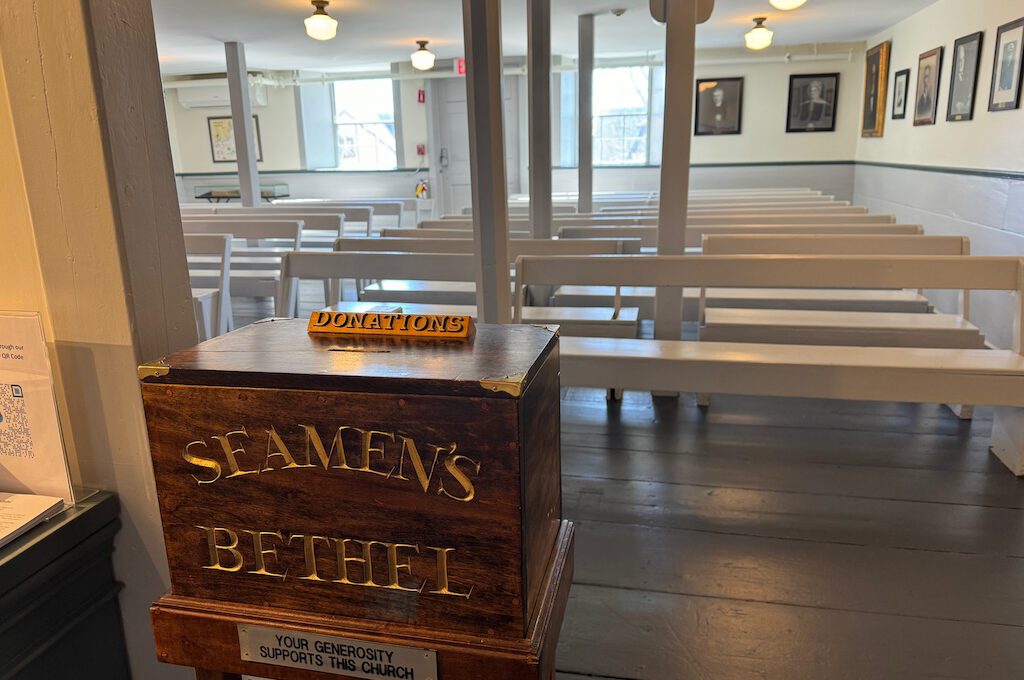
Here you’ll find rows of seating in the “Salt Box” where you can take a moment to enjoy a short film. (It’s worth noting that this film seemed to be the same one they were showing at the National Park Visitor Center just a few buildings down.)
This room is where they once had the school, letter exchange, library, and reading room, although many of the sailors were not literate. Take note of the pulpit which is the original one once in the chapel.
On the first floor, you can also stumble upon intriguing artifacts and some captivating artwork, including original Moby Dick inspired drawings used in the New York Times.
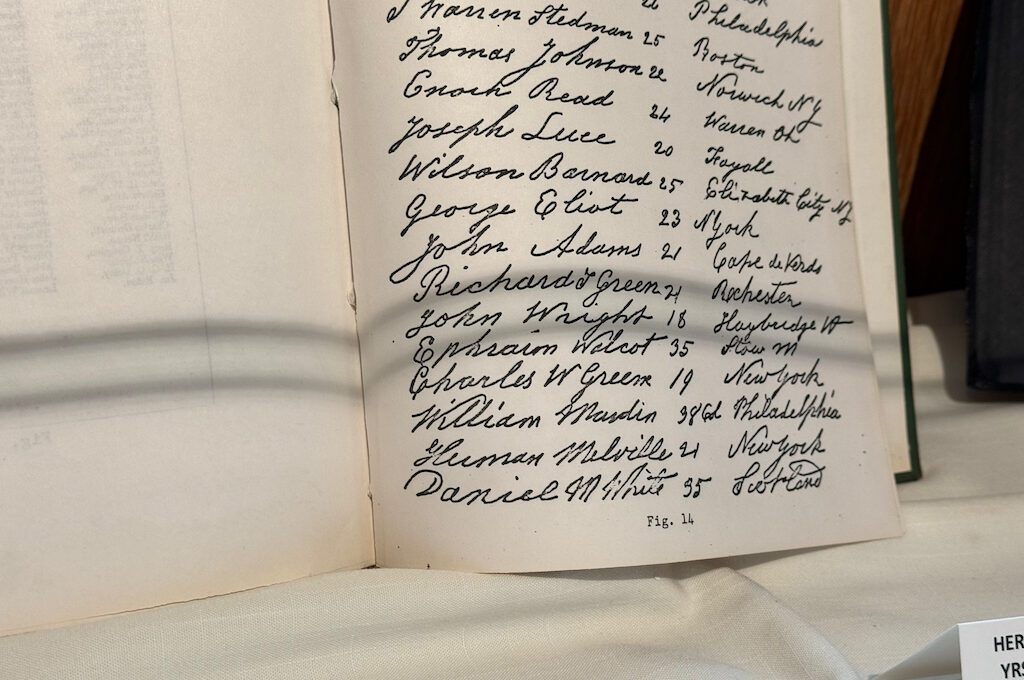
Moving on, we ascended to the chapel, which is unlike any chapel you’ve likely encountered.
The first thing that grabs your attention is the bow-shaped pulpit, a curious addition to a place of worship, which is precisely what makes it so fascinating. At first, it might seem out of place, but the more you gaze at it, the more it starts to make sense.
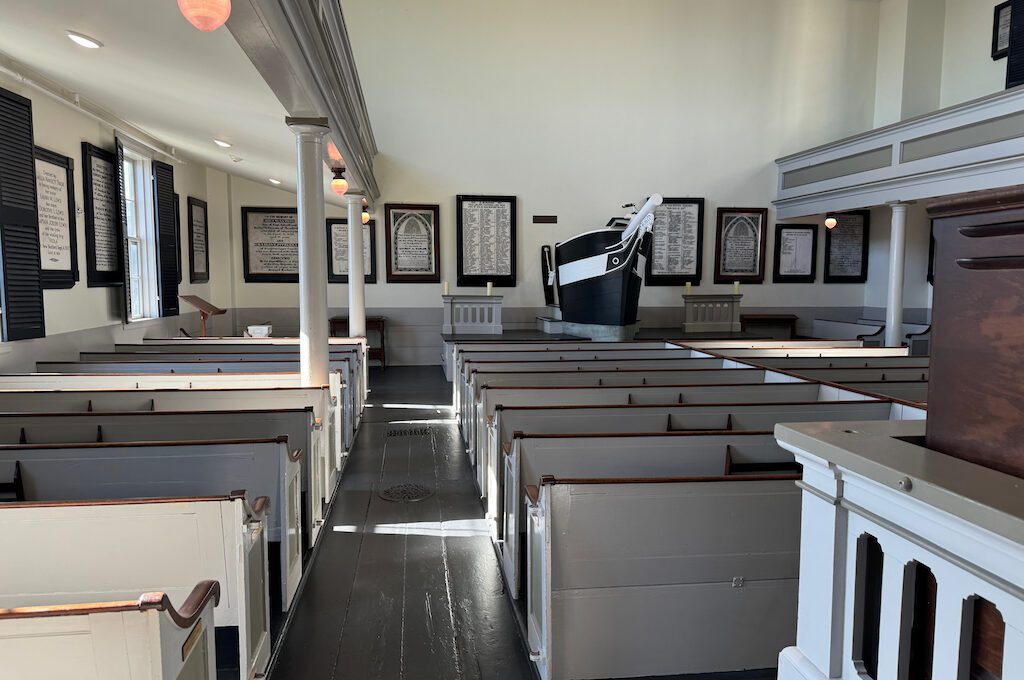
While you can’t enter the pulpit, you can step up close and admire the view from near the inside of the pulpit. This vantage point allows you to envision a congregation filled with anxious and eager whalers, preparing for their daring departures and conjuring a vivid sense of the past.
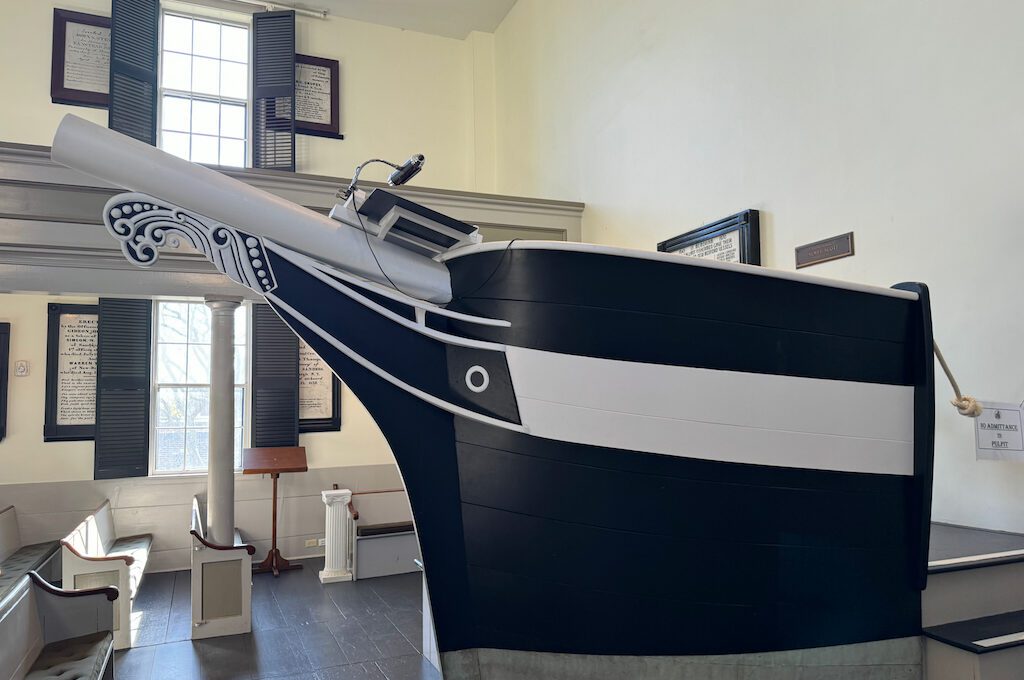
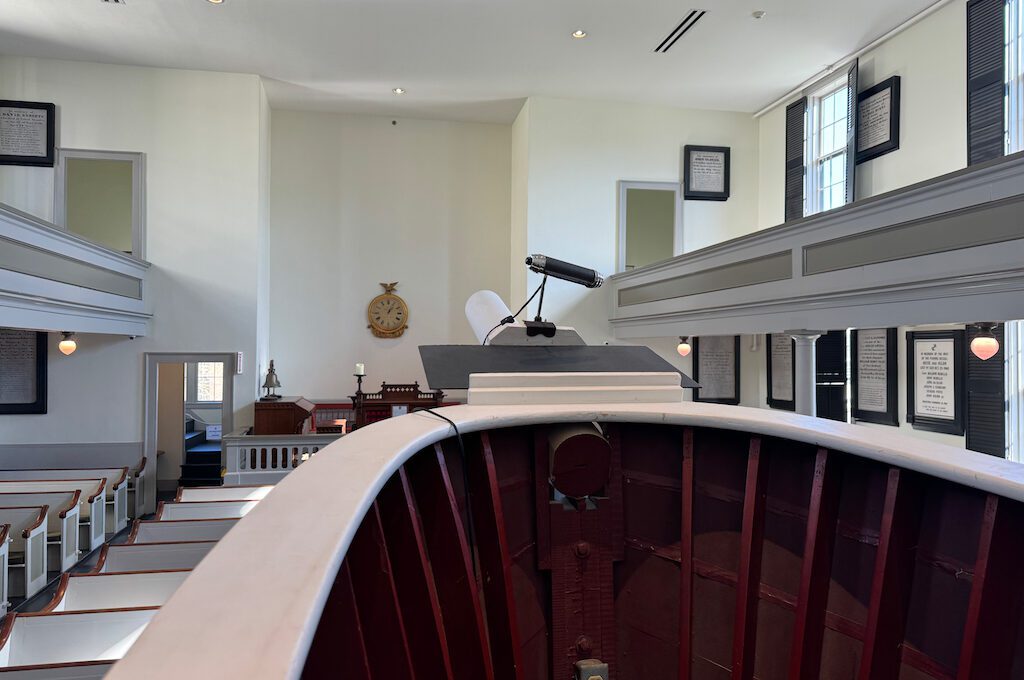
All along the walls, you’ll spot the cenotaphs, essentially gravemarkers for those lost at sea and another element found in Moby Dick.
These cenotaphs were placed in the chapel by family members as a way to commemorate their loved ones who met their end at sea. The cenotaph of Capt. William Swain, located next to the northwest window, vividly highlights that Captain Ahab’s tragic fate was not just a literary invention but a real risk faced by whalemen.
As you explore, you’ll encounter a multitude of names belonging to those who met their end at sea due to a range of circumstances, from tragic drownings to the relentless grip of consumption. Some cenotaphs offer detailed accounts of the incidents, shedding light on those perished from shipwrecks and the daring pursuit of whales.
This touching tradition endures, with the addition of new sea-related fatalities to this day.
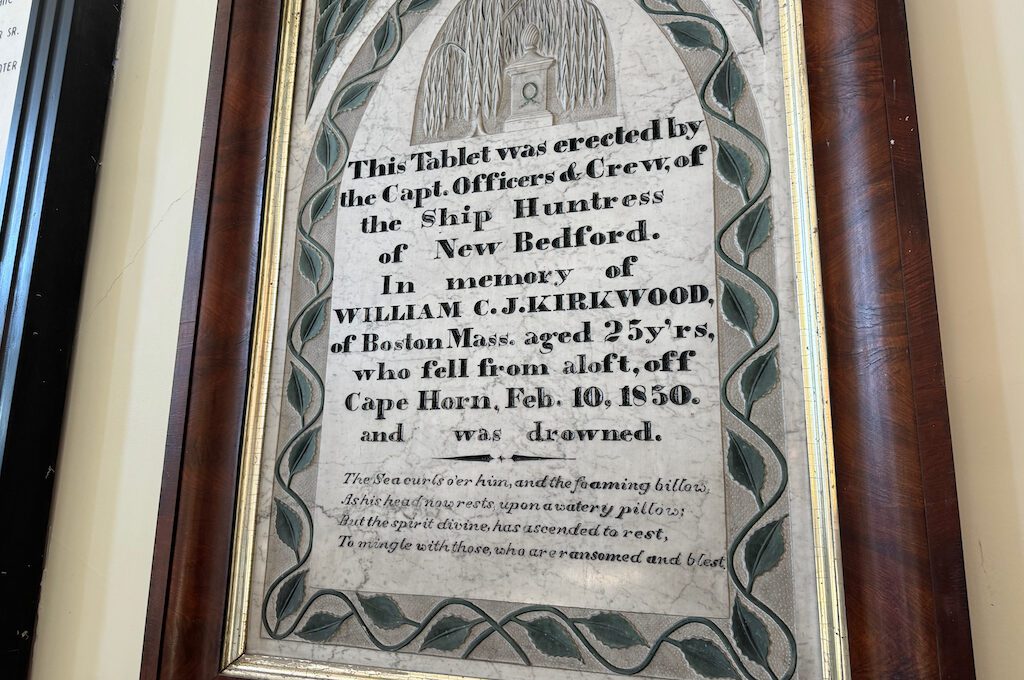
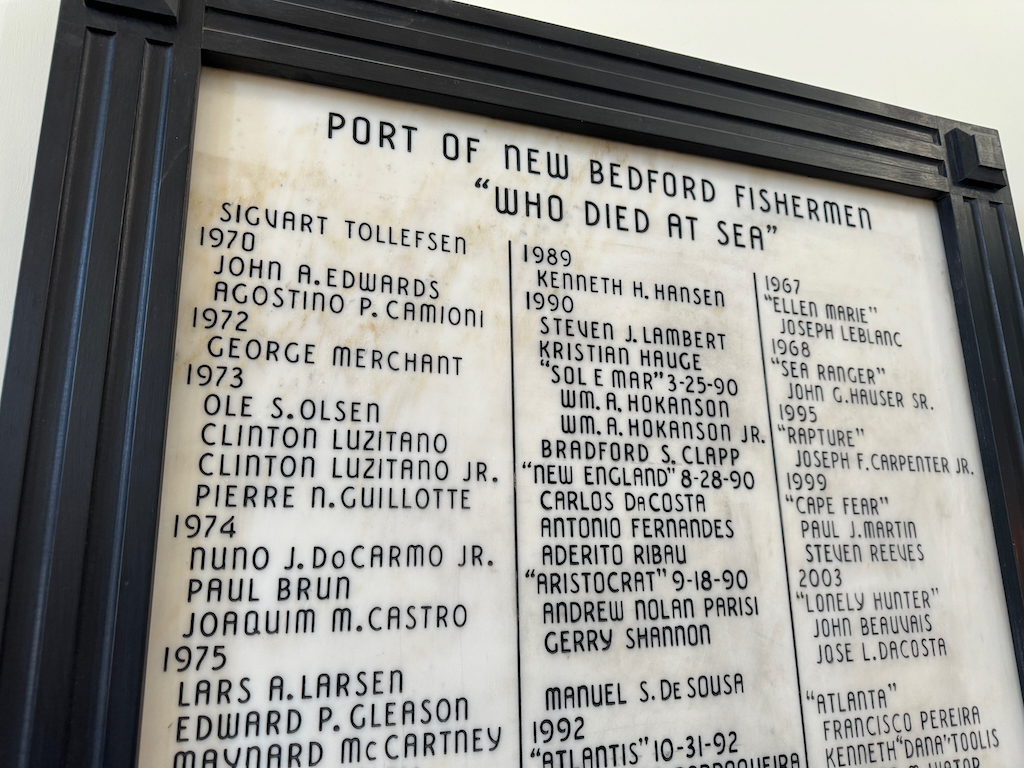
While exploring, I couldn’t resist taking a seat at the Herman Melville pew. The exact verification of his presence there remains a mystery, but it felt like a fun piece of history to embrace. Since I had recently started reading “Moby Dick,” I brought my copy with me and managed to squeeze in a quick chapter while in the chapel.
It turns out that they actually do an annual reading of Moby Dick in town and during the chapel and pulpit chapters they read from inside of the chapel.
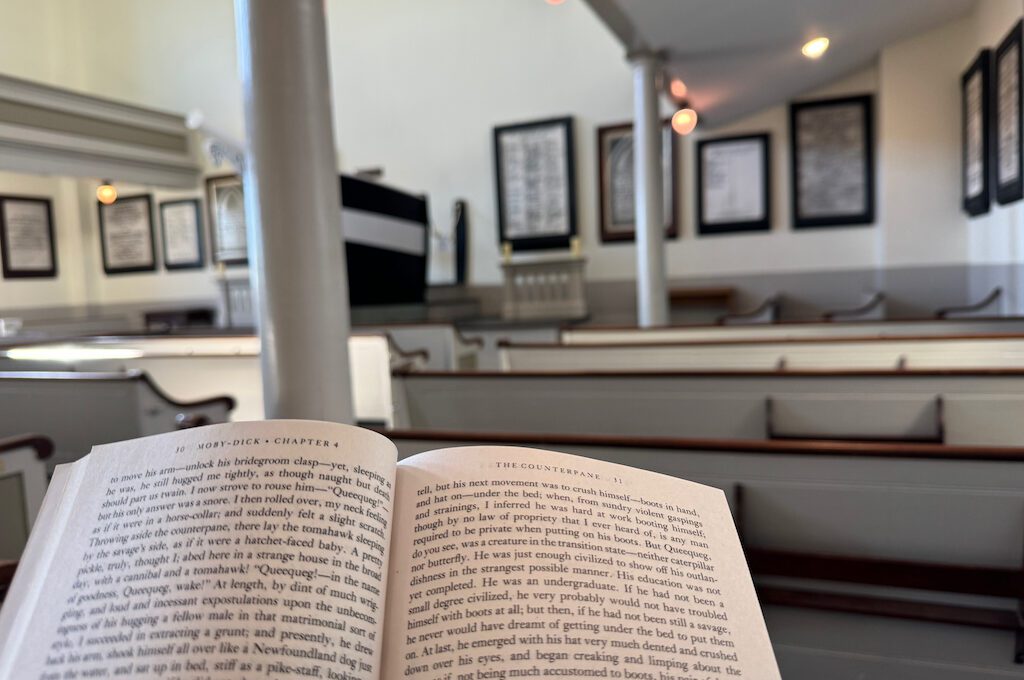
After perusing the different cenotaphs and immersing ourselves in the unique atmosphere, we decided it was time to head out.
Final word
The Seamen’s Bethel is far from your typical chapel experience. It’s a place deeply rooted in maritime history, particularly in the world of whalers during the first half of the 19th century. What adds to its allure is the special connection it shares with “Moby Dick,” making it even more captivating.
The visuals of the pulpit alone are unlike anything you’d typically encounter inside a chapel. As you stand there, you can’t help but conjure up thoughts of the whalers who once gathered here, preparing for journeys that could keep them at sea for several years at a stretch.
It’s also a place of remembrance where you can find plaques and memorials dedicated to the brave sailors who never returned from their perilous voyages, serving as a poignant reminder of the risks they undertook in pursuit of their livelihoods.
The Seamen’s Bethel encapsulates not only the seafaring history of the region but also the indomitable spirit and sacrifices of those who dedicated their lives to the relentless pursuit of whales in the unforgiving depths of the ocean.
Daniel Gillaspia is the Founder of UponArriving.com and the credit card app, WalletFlo. He is a former attorney turned travel expert covering destinations along with TSA, airline, and hotel policies. Since 2014, his content has been featured in publications such as National Geographic, Smithsonian Magazine, and CNBC. Read my bio.

